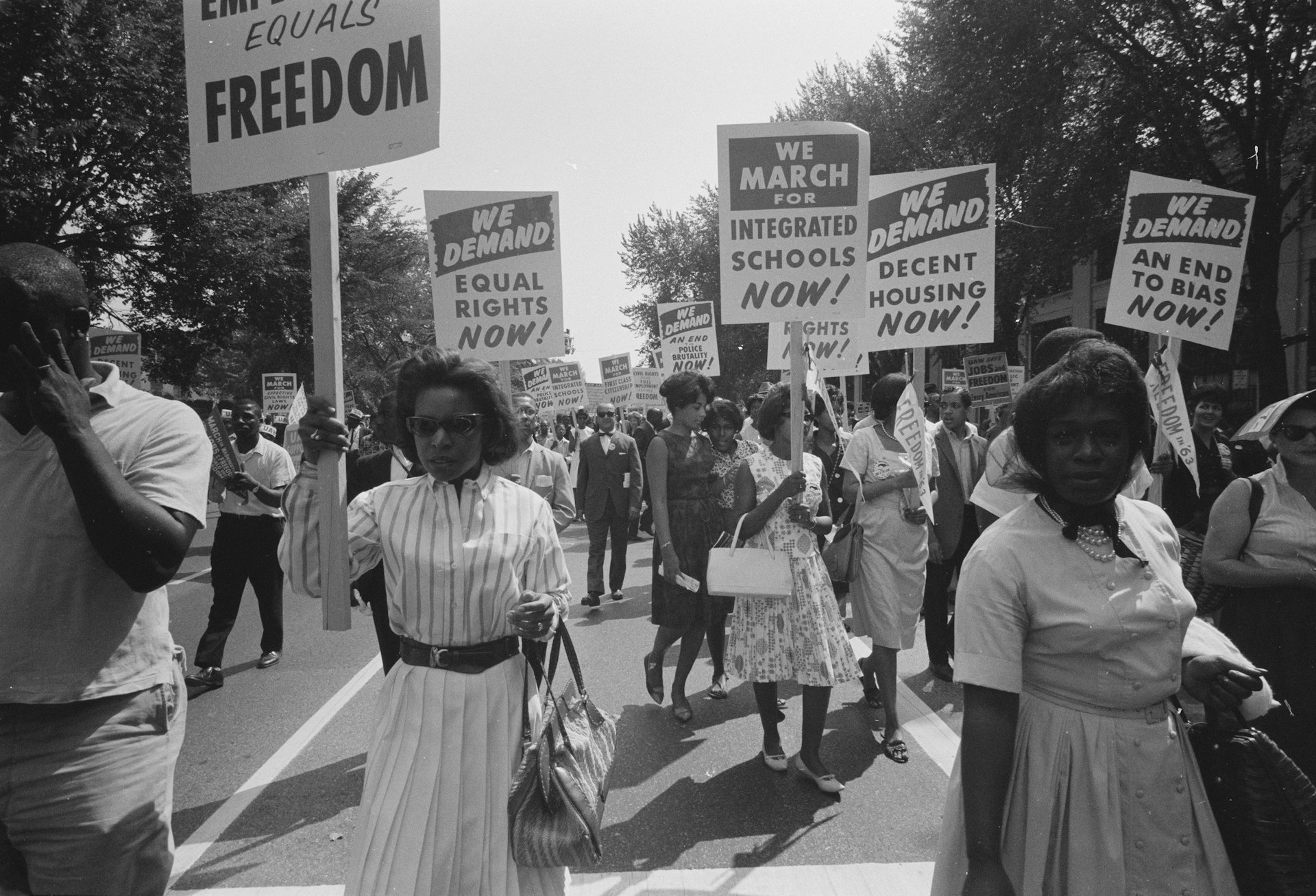A Comprehensive Guide to the History and Impact of the American Civil Rights Movement


Photo by Library of Congress on Unsplash
Introduction: Understanding the American Civil Rights Movement
The American civil rights movement was a transformative series of events, campaigns, and legislative victories that spanned the mid-20th century, fundamentally altering the social, political, and legal landscape of the United States. While efforts for equality date back centuries, the civil rights movement from 1954 to 1968 stands out for its widespread impact and enduring legacy. This guide explores the movement’s origins, key events, prominent leaders, and the practical steps individuals can take today to learn more, engage with relevant organizations, and access related educational resources.
Origins and Context: Segregation and Early Efforts
To understand the roots of the civil rights movement, it’s vital to recognize the entrenched system of racial segregation and discrimination in the United States following the Civil War. Jim Crow laws in the South enforced separate public facilities, schools, and transportation for Black and white Americans, systematically denying African Americans equal rights and opportunities. Early 20th-century organizations like the NAACP (founded in 1909) laid the groundwork for legal challenges and public advocacy, gradually building momentum for the larger movement that would follow [5] .
Key Milestones and Major Events
The modern civil rights movement accelerated in the post-World War II era, culminating in a series of defining events that reshaped the nation:
1. Legal Victories and School Desegregation
In 1954, the Supreme Court’s decision in
Brown v. Board of Education
declared that racial segregation in public schools was unconstitutional, overturning the “separate but equal” doctrine and setting a critical legal precedent
[1]
. This victory was soon followed by the 1957 integration of Little Rock Central High School by the Little Rock Nine, with federal troops enforcing the students’ right to attend
[1]
.
2. Montgomery Bus Boycott and Nonviolent Protest
On December 1, 1955, Rosa Parks’ refusal to give up her seat to a white passenger on a segregated bus in Montgomery, Alabama, sparked a 381-day boycott of the city’s buses by African Americans. The success of the Montgomery Bus Boycott propelled Dr. Martin Luther King, Jr. into national prominence and demonstrated the power of nonviolent, mass protest [1] .
3. Sit-Ins and Freedom Rides
Beginning in 1960, student activists launched sit-ins at segregated lunch counters across the South, leading to the formation of the Student Nonviolent Coordinating Committee (SNCC). Freedom Riders in 1961 rode interstate buses to challenge segregation in bus terminals, facing violent opposition but ultimately prompting federal intervention [2] .
4. Birmingham Campaign and the March on Washington
In 1963, activists in Birmingham, Alabama, faced police violence while protesting segregation. That same year, the March on Washington for Jobs and Freedom drew over 250,000 demonstrators to the nation’s capital, where Dr. King delivered his iconic “I Have a Dream” speech, calling for an end to racism and for economic justice [4] . These actions led to increased public support and legislative momentum.
5. Landmark Legislation
The Civil Rights Act of 1964 outlawed discrimination based on race, color, religion, sex, or national origin, banning segregation in schools, employment, and public accommodations. The Voting Rights Act of 1965 eliminated many barriers to Black enfranchisement, such as literacy tests and poll taxes, fundamentally transforming voter participation in the South [5] . The Fair Housing Act of 1968 further prohibited discrimination in housing [4] .
Influential Leaders and Organizations
The movement’s success was driven by a diverse array of leaders and organizations, each employing unique strategies:
- Dr. Martin Luther King, Jr.: Advocated nonviolent resistance and led major campaigns such as the Birmingham Movement and the March on Washington.
- Rosa Parks: Her act of defiance ignited the Montgomery Bus Boycott.
- Malcolm X: Called for Black empowerment and self-defense, influencing the broader struggle for equality.
- Organizations: The NAACP, SNCC, Southern Christian Leadership Conference (SCLC), and Congress of Racial Equality (CORE) coordinated legal challenges, protests, and voter registration drives [2] .
Tactics, Challenges, and Practical Steps for Engagement
The civil rights movement employed a wide range of tactics-boycotts, marches, sit-ins, legal challenges, and grassroots organizing. Participants faced arrest, violence, and economic reprisals, yet remained steadfast in demanding equality. Today, individuals interested in learning more or becoming involved can consider the following steps:
- Explore primary source documents, oral histories, and digital archives from institutions like the Library of Congress. You can search for “Civil Rights Movement primary sources” on the Library of Congress website or visit local libraries for curated collections [5] .
- Contact contemporary civil rights organizations such as the NAACP for information about local chapters, educational events, and advocacy opportunities. Visit the official NAACP website or search for your state’s chapter for contact details.
- Consider volunteering with groups focused on voter rights, legal advocacy, or community education. Many organizations provide online forms or local offices for getting involved-search for “voting rights volunteer opportunities” in your area or through national non-profits.
- Attend public lectures, museum exhibits, or virtual tours dedicated to civil rights history. Museums such as the National Civil Rights Museum offer in-person and digital resources.
The Ongoing Legacy and Current Relevance
The gains of the civil rights movement are embedded in American law and culture, yet the struggle for equality continues. Modern movements addressing racial justice, voting rights, and police reform draw inspiration from mid-century activism. For those seeking to understand ongoing challenges and reforms, consider:
- Following reputable news outlets and research centers for updates on civil rights policy.
- Engaging with academic courses or public webinars on American history and law.
- Connecting with local or national advocacy groups to participate in contemporary campaigns or educational outreach.
Accessing Educational Resources and Further Study
To deepen your understanding, seek out:
- University libraries and online databases for scholarly articles and historical records.
- Educational websites offering curated timelines, biographies, and document collections. For example, Britannica provides a timeline of key events [1] .
- Public workshops, online courses, and book clubs centered on civil rights history and its modern implications.
Summary and Key Takeaways
The American civil rights movement was a defining era that reshaped national attitudes, laws, and opportunities regarding race and equality. Its lessons remain vital for understanding current social justice efforts and accessing resources to continue the work of equality and inclusion. Whether you are a student, educator, advocate, or interested citizen, a wealth of resources and organizations are available to help you learn more, get involved, and support the ongoing pursuit of civil rights for all.

Photo by Library of Congress on Unsplash
References
- [1] Britannica (2023). Timeline of the American Civil Rights Movement.
- [2] Wikipedia (2024). Timeline of the Civil Rights Movement.
- [3] Gettysburg Flag Works (2023). Key Events in the American Civil Rights Movement.
- [4] Jim Crow Museum (2023). Civil Rights Era Timeline.
- [5] Library of Congress (2023). The Civil Rights Movement: U.S. History Primary Source Timeline.






